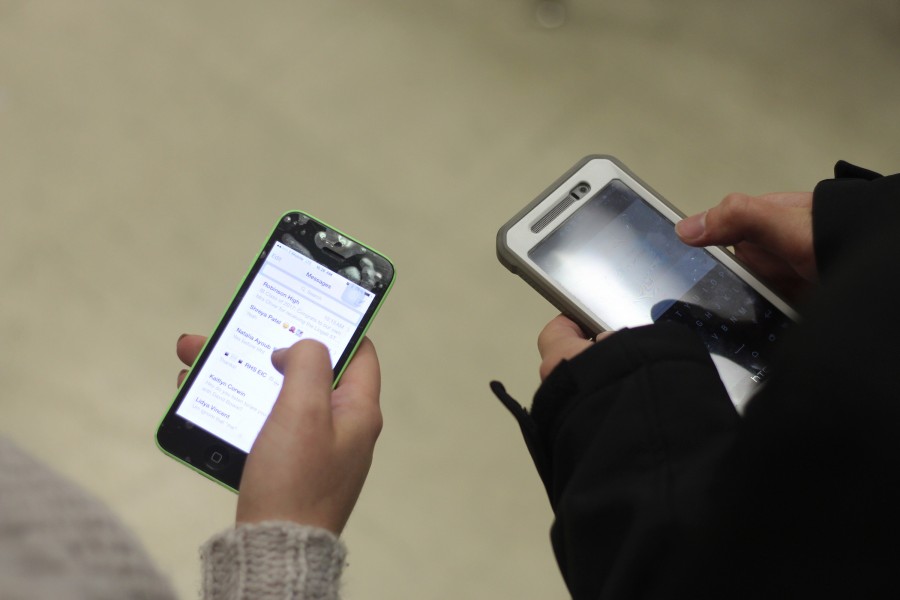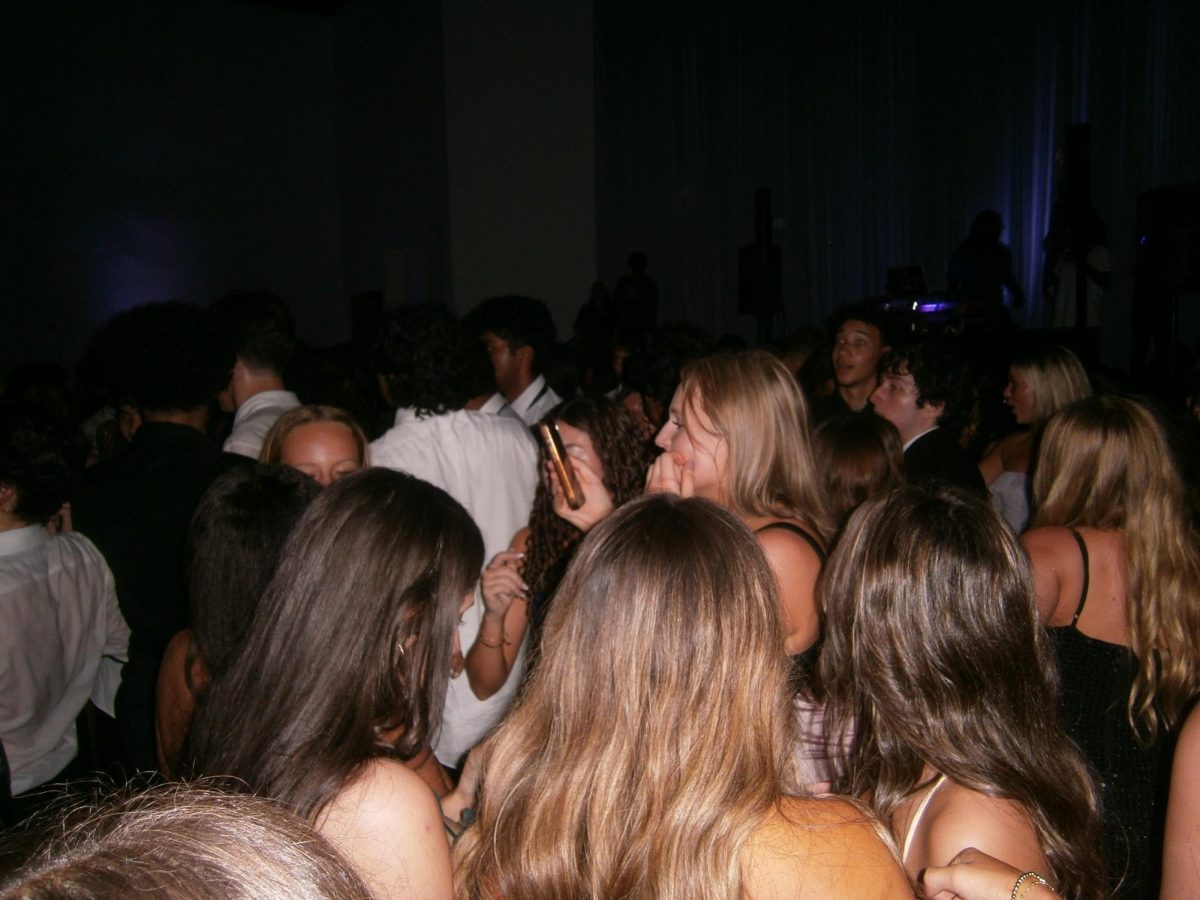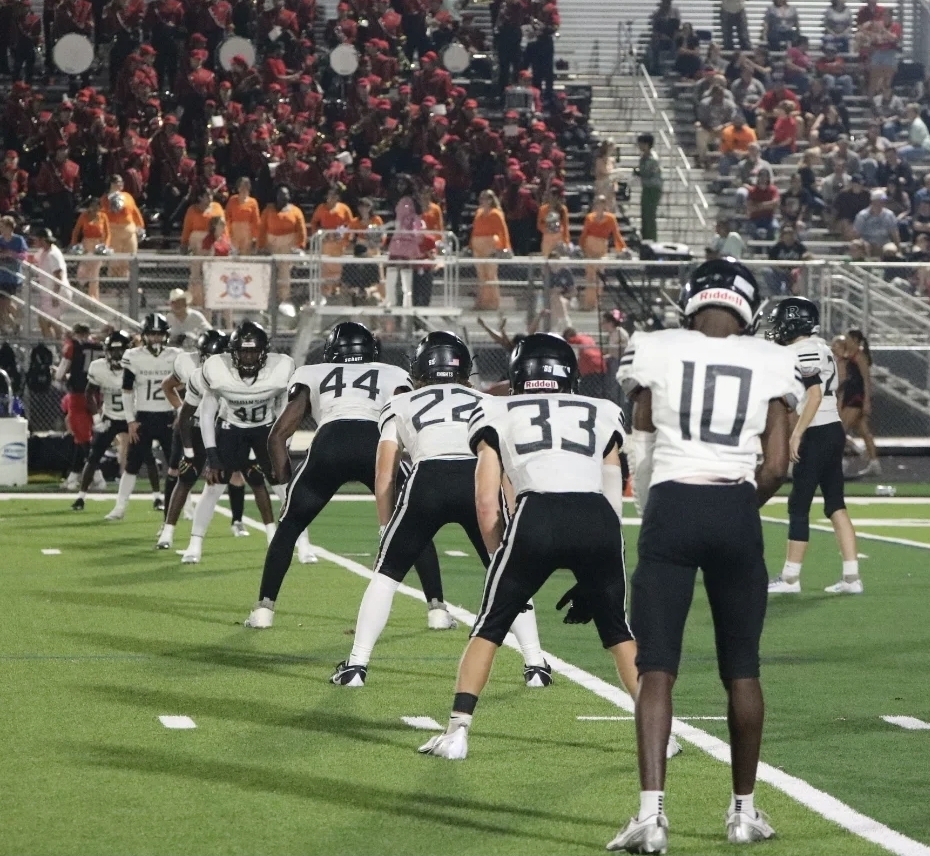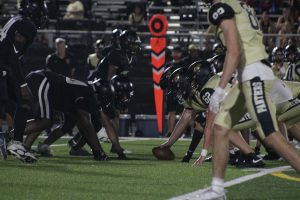Can We Talk?
Photo I. Hanewicz
Technology and talking have changed the way relationships work in high school.
January 11, 2016
“We’re talking.” If heard in passing, this phrase is easily misinterpreted. Unlike the traditional use of the word talking- simply put, speaking- talking has taken a different form as a new shape of dating. Not quite dating, but not quite single, students label relationships as “talking” as a more casual alternative to a serious relationship.
Veronica Falcon (’18) first started talking to guys when she was 13 and has seen both the good and bad sides of talking.
“Talking is when two people clearly want to be together but they’re not there yet so it’s the prospect of being in a relationship,” Falcon said.
The stage of talking can create tension between two people. In the LGBT community, this tension can be greater because of a fear of judgment. Being openly gay since middle school, Mariano Hernandez (’18) does not let this fear hold him back. Despite overcoming this fear of judgment, Hernandez still deals with it when it comes to talking to someone still in the closet.
“At school it’s awkward because it’s like we like each other but just me and you know it.” Hernandez said. “It’s awkward in person, especially if he’s in the closet, like ‘Oh yeah I like you but no one can know’,”
Before the advent of technology, talking was done face-to-face, so there was nervousness, but not the over-analysis that texting often causes.
Donald Pippin, an IB psychology teacher, sees talking in a different light than his students do.
“I think social media leads to [over-emphasis] of the process because where at one point it was verbal, you remember most of it but not every detail, you take it in context,” Pippin said. “But if you’re analyzing over a text, you’re gonna over-analyze it, what did they really mean by the word ‘the’?”
While talking seems to some a new phenomenon, it may not be all that different from the way things used to be.
“[Talking]’s been a thing since humans have started trying to find someone to be with,” Pippin said. “It’s changed mostly because it’s moved electronically and in some ways that’s allowed people to come up with new ways to essentially flirt, which is what this is, it used to be called flirting.”
Now, instead of walking someone to class and carrying their books to express interest, a quick text with a winky face emoji can be sent in an instant.
Texting can be a double-edged sword. In a Teen Advisory Board survey, 77% of surveyed teens chose texting as one of the top ways relationships begin and 82% of the teens chose it as one of the top ways that relationships end.
“Everything’s expected to be more immediate, there’s not near enough patience in relationships and relationships don’t get good if you’re not patient,” Pippin said.
Talking on social media platforms eliminates the social pressure teens can feel, making them more open with expressing themselves faster than they would in person.
“More secrets are told on social media than in person because in person, it’s awkward,” Hernandez said.
Like texting, social media is not all good or all bad; another Teen Advisory Board survey found that social media affects 75% of teenage relationships negatively, 18% positively and 7% with no affect.
“I don’t think it has a negative or positive impact,” Pippin said. “I think that people need to choose how to create better outcomes with technology, technology itself is not good or evil, it’s how you use it.”












Nayla • Feb 16, 2016 at 9:07 pm
You inspire me Mariano, always so outspoken and proud! Love you pal!